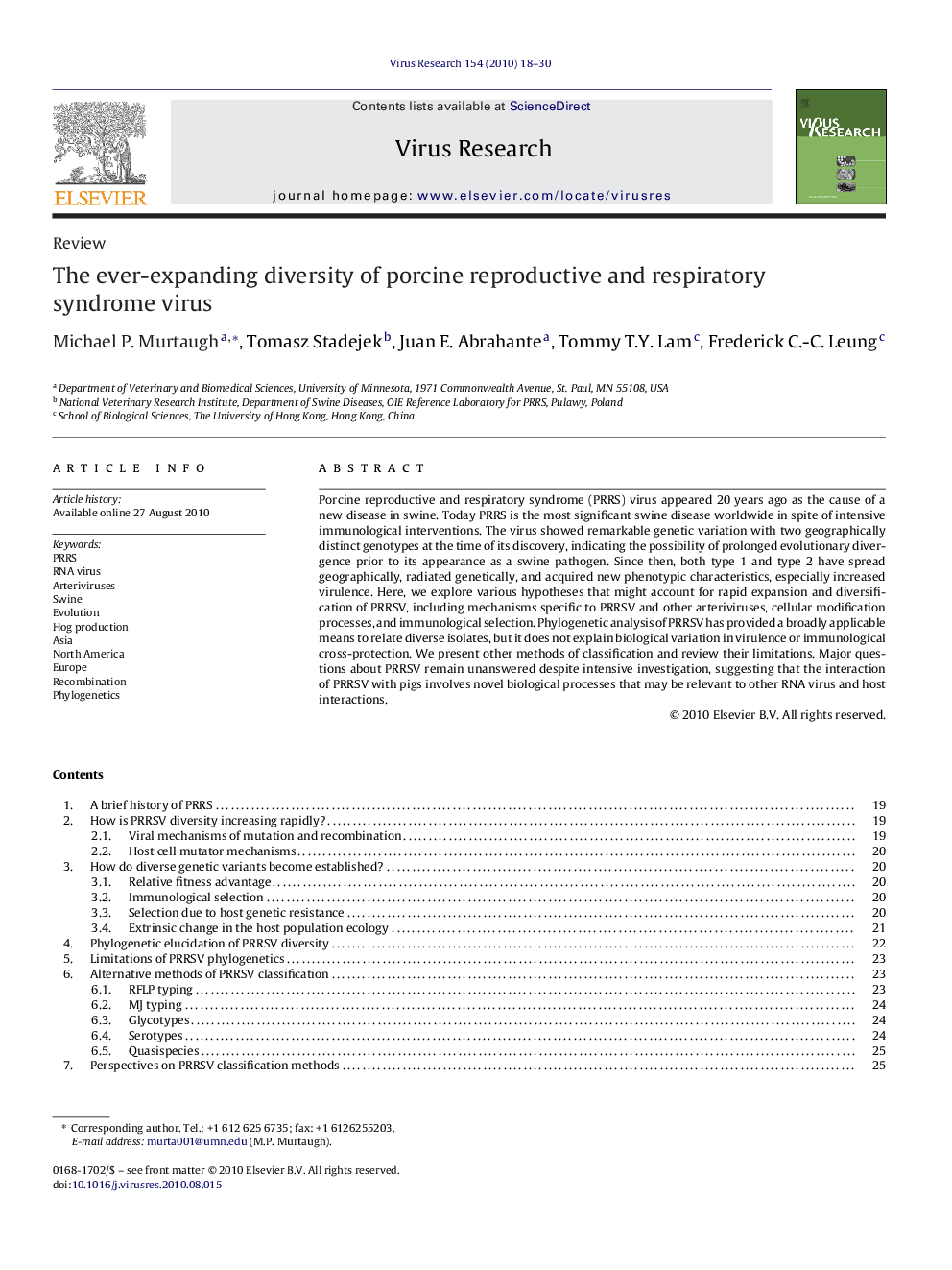| Article ID | Journal | Published Year | Pages | File Type |
|---|---|---|---|---|
| 3429111 | Virus Research | 2010 | 13 Pages |
Porcine reproductive and respiratory syndrome (PRRS) virus appeared 20 years ago as the cause of a new disease in swine. Today PRRS is the most significant swine disease worldwide in spite of intensive immunological interventions. The virus showed remarkable genetic variation with two geographically distinct genotypes at the time of its discovery, indicating the possibility of prolonged evolutionary divergence prior to its appearance as a swine pathogen. Since then, both type 1 and type 2 have spread geographically, radiated genetically, and acquired new phenotypic characteristics, especially increased virulence. Here, we explore various hypotheses that might account for rapid expansion and diversification of PRRSV, including mechanisms specific to PRRSV and other arteriviruses, cellular modification processes, and immunological selection. Phylogenetic analysis of PRRSV has provided a broadly applicable means to relate diverse isolates, but it does not explain biological variation in virulence or immunological cross-protection. We present other methods of classification and review their limitations. Major questions about PRRSV remain unanswered despite intensive investigation, suggesting that the interaction of PRRSV with pigs involves novel biological processes that may be relevant to other RNA virus and host interactions.
Research highlights▶ The remarkable genetic variation of PRRSV is due to recombination and mutation. ▶ Distinct genotypes indicate prolonged evolutionary divergence prior to emergence. ▶ Phylogeny does not explain biological variation in virulence or immune cross-protection. ▶ The history of pigs determines the history of PRRSV. ▶ Biology of the PRRSV–pig interaction is relevant to other RNA virus–host interactions.
